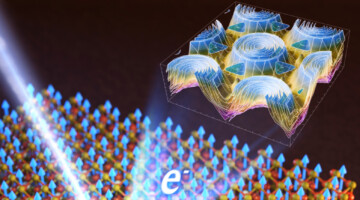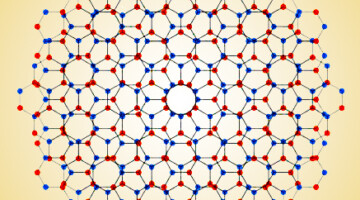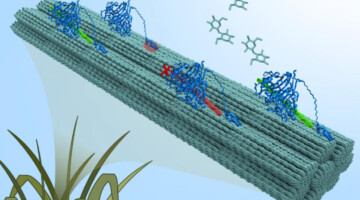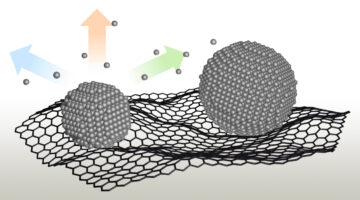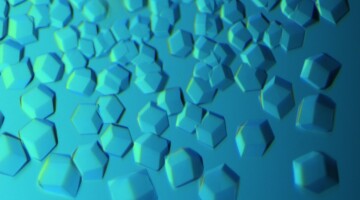Researchers found that small changes in how electron spins interact with each other can make a big difference in the magnetic transition temperatures of 2D magnets. Understanding such factors can help create better magnetic materials for information storage, sensors, medical imaging, and energy-efficient computing. Read more »![]()
![]()
Science Highlights
Big Twist Leads to Tunable Energy Gaps in a Bilayer Stack
Researchers found that twisting 2D layers at atypically large angles opens up potentially useful energy gaps in the material’s band structure. The results suggest a new way to tune materials for optoelectronic applications and provide a platform for exploring novel “moiré” phenomena beyond those observed at small twist angles. Read more »![]()
![]()
Probing Active-Site Chemical States in a Co-Based Catalyst
Researchers identified the dominant chemical state of active sites in a cobalt-based catalyst using resonant photoemission spectroscopy under realistic conditions. The work will help scientists develop more-efficient catalysts for removing noxious carbon monoxide gas from exhaust streams generated by the burning of fossil fuels. Read more »![]()
![]()
Tracking the Breakdown of Cellulose at the Micron Scale
A time-resolved study using infrared spectromicroscopy in a carefully controlled environment revealed why enzymes get bogged down when trying to break up cellulose from plants. The work sheds new light on the challenge of extracting the sugars locked up in plants for use in making petroleum-free fuels, chemicals, and medicines. Read more »![]()
![]()
How Processing Affects Structure in Composite Nanotube Yarns
Using the ALS, researchers found quantitative correlations between processing parameters and the structure of ultrafine, polymer-reinforced carbon-nanotube fibers. The work will facilitate the production of high-strength materials, including those needed for positioning target capsules for fusion research at the National Ignition Facility. Read more »![]()
![]()
Flat Bands Signal Electrons Trapped in 3D
Researchers found flat electronic band structures—known hallmarks of electrons trapped in two dimensions—but in a material that extends this phenomenon to three dimensions. The work opens up a material framework for exploring superconductivity and other exotic states in three dimensions for advanced electronic applications. Read more »![]()
![]()
Tracking Platinum Movement on Fuel-Cell Electrodes
Researchers tracked the movement of the platinum nanoparticles that catalyze reactions in polymer electrolyte fuel cells (PEFCs) and correlated this movement with nanoparticle degradation. The results yielded solutions that can immediately reduce platinum waste in emission-free heavy-duty fuel-cell vehicles. Read more »![]()
![]()
Computer-Aided Protein Design for New Biomaterials
Using a computer-based approach, researchers designed porous protein crystals that were revealed to be stable, tunable, and atomically accurate using x-ray scattering and diffraction at the ALS. The work provides a powerful new platform for biological materials engineering and opens up wide applications in biotechnology and medicine. Read more »![]()
![]()
Internal Currents in Lithium Batteries after Fast Charging
In lithium batteries after fast charging, researchers measured the persistence of internal currents and found that large local currents continue even after charging has stopped. The work uses hard x-ray 3D imaging in a novel way and sheds light on the causes of thermal runaway and the catastrophic failure of lithium batteries at rest. Read more »![]()
![]()
How Structure Affects the Activity of Lipid Nanoparticles
Berkeley Lab and Genentech scientists related the internal structures of lipid nanoparticles to their efficacy at drug delivery, using a combination of methods including x-ray scattering at the ALS. The work promises to expedite the development of drug delivery systems for the treatment of diseases such as COVID-19 and cancer. Read more »![]()
![]()
- « Previous Page
- 1
- 2
- 3
- 4
- 5
- 6
- …
- 27
- Next Page »
